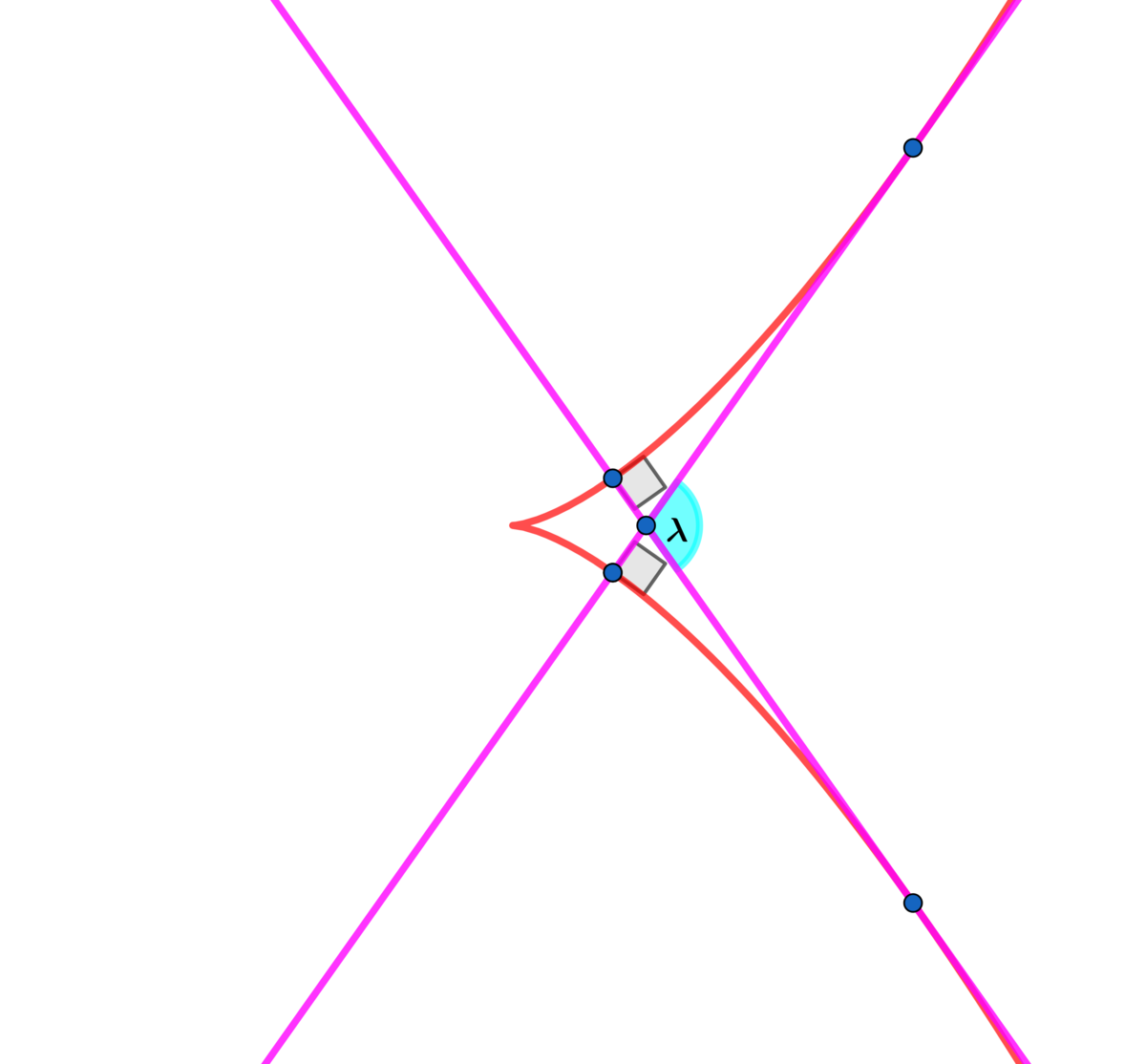It's All Ratios
![]()
In the bi-cone above let be the angle(in degrees) made between two surfaces.
Find the angle which minimizes the surface area of the bi-cone above when the volume is held constant.

Let .
There are two lines which are both tangent and normal to the above curve.
Find the angle (in degrees) made between the two lines above.
Find .
The answer is 1.
This section requires Javascript.
You are seeing this because something didn't load right. We suggest you, (a) try
refreshing the page, (b) enabling javascript if it is disabled on your browser and,
finally, (c)
loading the
non-javascript version of this page
. We're sorry about the hassle.
We just need the top portion of the bi-cone, then double the angle in the final result.
V = 3 1 π r 2 h = K and S = π r r 2 + h 2 .
V = 3 1 π r 2 h = K ⟹ h = π r 2 3 K ⟹ S ( r ) = r π 2 r 6 + 9 K 2 ⟹
d r d S = r 2 π 2 r 6 + 9 K 2 2 π 2 r 6 − 9 K 2 = 0 r = 0 ⟹ r = ( 2 π 3 K ) 3 1 ⟹ h = ( π 6 k ) 3 1
⟹ tan ( 2 θ ) = r h = ( 2 2 ) 3 1 = 2 ⟹ θ = 2 arctan ( 2 ) ≈ 1 0 9 . 4 7 1 2 2 .
Let x ( t ) = a t 2 + b , y ( t ) = c t 3 + d ⟹ d x d y ∣ ( t = t 1 ) = 2 a 3 c t 1 ⟹ the tangent line to the curve at ( x ( t 1 ) , y ( t 1 ) ) is: y − ( c t 1 3 + d ) = 2 a 3 c t 1 ( x − ( a t 1 2 + b ) )
Let the line be normal to the curve at ( x ( t 2 ) , y ( t 2 ) ) ⟹ c ( t 2 − t 1 ) ( t 2 2 + t 1 t 2 + t 1 2 ) = 2 3 c t 1 ( t 2 − t 1 ) ( t 2 + t 1 ) ⟹ 2 c ( t 2 − t 1 ) ( 2 t 2 2 − t 1 t 2 − t 1 2 ) = 0 t 1 = t 2 ⟹ t 2 = − 2 t 1
Since the tangent is also normal to the curve at ( x ( t 2 ) , y ( t 2 ) ) ⟹ 4 a 2 9 c 2 t 1 t 2 = − 1 ⟹ 8 a 2 9 c 2 t 1 2 = 1 ⟹ t 1 = ± 3 c 2 2 a ⟹ the two slopes are ± 2 .
tan ( 2 λ ) = 2 ⟹ λ = 2 arctan ( 2 ) ≈ 1 0 9 . 4 7 1 2 2 .
⟹ θ λ = 1 .
.